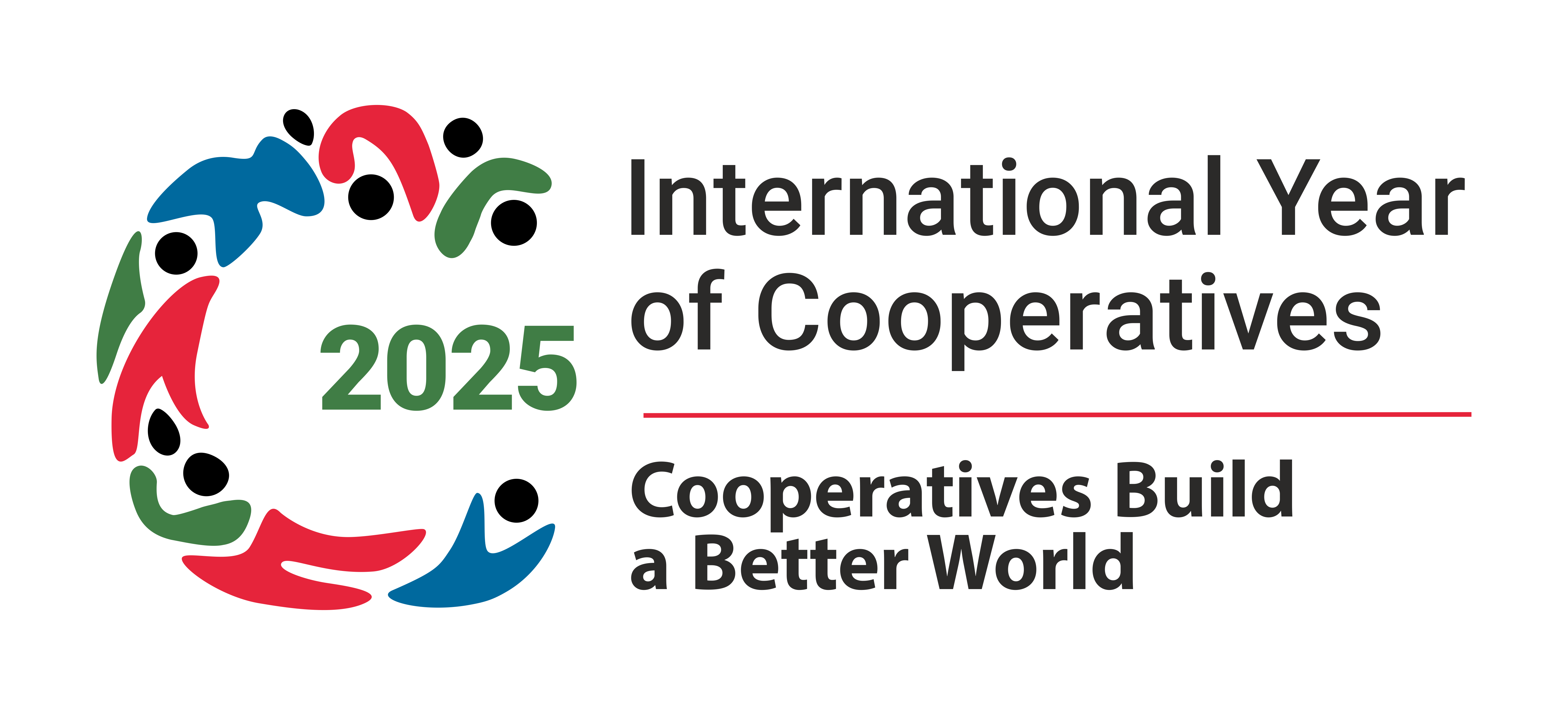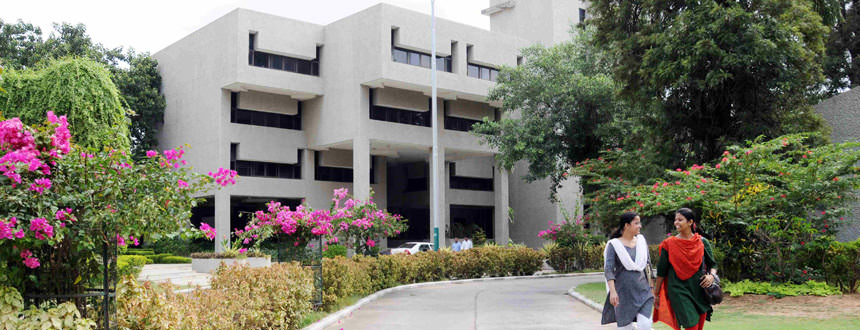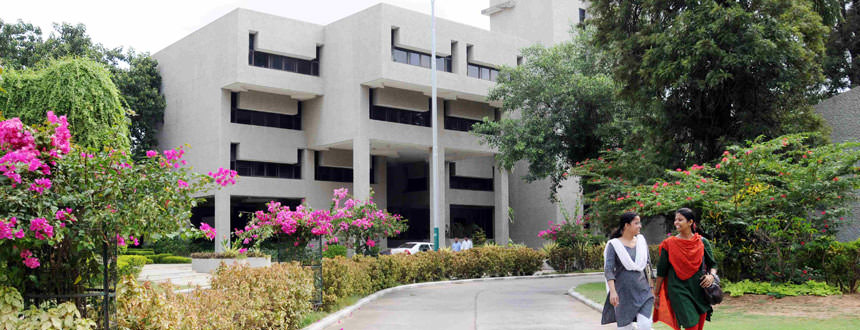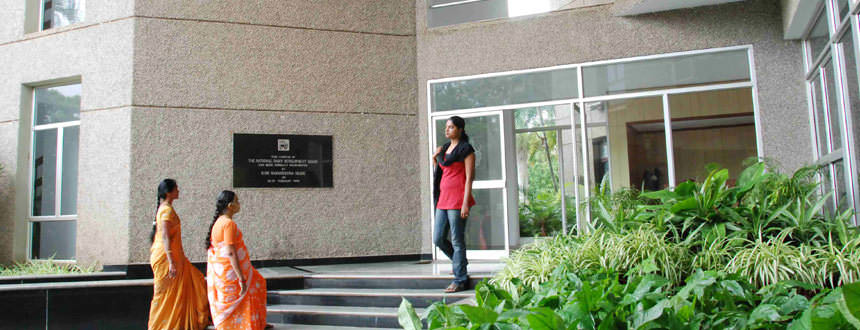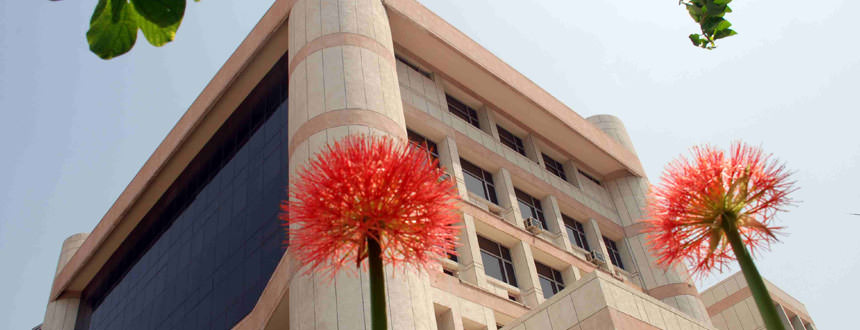Keynote Address on Dairying for Health & Wealth by Shri Dilip Rath, Chairman, NDDB at 48th Dairy Industry Conference of Indian Dairy Association- 20 February 2020, Jaipur
Hon’ble Union Minister of State for Fisheries, Animal Husbandry & Dairying, Dr Sanjeev Kumar Balyanji; Shri Atul Chaturvedi, Secretary, Department of Animal Husbandry & Dairying, Government of India; Dr Rajesh Sharma, Secretary, Department of Animal Husbandry, Dairying & Fisheries, Government of Rajasthan; Dr. GS Rajorhia, President, Indian Dairy Association; Ms. Caroline Emond, Director General, International Dairy Federation; Shri SS Mann, Chairman, Northern Zone of Indian Dairy Association; distinguished guests and delegates of the dairy industry, ladies and gentlemen!
First of all, I would like to compliment IDA for having chosen the theme “Dairying for Health and Wealth” for the 48th Dairy Industry Conference, as it is of great relevance not only for our country but for the world as a whole. The decade starting from 2016 happens to be the United Nations Decade of Action on Nutrition, which was launched with the objective of undertaking sustained and coherent implementation of policies, programmes and increased investments to eliminate malnutrition in all its forms, everywhere, leaving no one behind.
As per the United Nations Report (The State of Food Security and Nutrition in the World 2019, FAO), globally 10.7 per cent people are undernourished, 21.9 per cent children under five years of age are stunted, 7.3 per cent children under five years are wasted and 32.8 per cent of women of reproductive age are anaemic. The corresponding figures for our country are higher for all the parameters at 14.5 per cent, 37.9 per cent, 20.8 per cent, and 51.4per cent respectively. This is indeed a cause of serious concern both globally and specially for our country.
Eradicating hunger, ensuring nutritional security and reducing diet-related non-communicable diseases such as cardiovascular diseases, diabetes and cancer continue to dominate public health policy world over. Sustainable food production systems, healthy lifestyles and dietary patterns are the essential elements for achieving good health. Dairy industry as a whole can take pride in the fact that it has contributed and continues to contribute towards building a healthier world with healthier people and, at the same time, is creating wealth and prosperity. This is particularly true for our country where dairying is also intricately linked with livelihoods of millions of small milk producers and creation of wealth in the rural areas.
As we move into the third decade of this century, what could be a better policy focus area for our country than to promote dairying to ensure better livelihood opportunities for millions of our dairy farmers and better nutrition and health for our growing population, especially women and children.
Milk as a nutrient dense food
India being primarily an agrarian society and large sections being lacto vegetarian, milk has been part of our diet since ages. It is a major source of dietary energy, high-quality protein and fat and meets the micro-nutrient requirement of the recommended intakes of different vitamins, minerals and trace elements to a large extent. Gandhiji in his book titled “Key to Health” had himself recommended a diet which includes milk and milk products; and I quote him:
“I have always been in favour of pure vegetarian diet. But experience has taught me that in order to keep perfectly fit, vegetarian diet must include milk and milk products such as curd, butter, ghee, etc.”
The fact that in one glass of milk every day, you get your daily requirement of up to 30 per cent of calcium, 26 per cent of riboflavin, 25 per cent of vitamin D, 25 per cent of phosphorus, 22per cent of vitamin B-12, 16 per cent of protein, 10 per cent each of potassium, vitamin A and Niacin, bears testimony to the claim that milk can very well be termed a complete nutrient dense food.
Milk as a vehicle to alleviate malnutrition
We have come a long way since the 1950s, 60s and 70s, when our country was dependent on dairy imports and we have achieved impressive growth in the dairy sector since the 1980s, largely driven by small milk producers through farmers owned and controlled institutions and fuelled by Operation Flood programme. India continues to be the largest milk producer in the world with annual production of 188 million tonnes recorded in 2018-19. Milk production in the country has been growing at an annual average rate of over 6 per cent during the last five years vis-à-vis a 1.2 per cent growth in population thereby resulting in increase in our per capita availability of milk from 322 grams per day in 2014 to about 400 grams per day in 2019.
This phenomenal progress not only made our country self-sufficient in milk and contributed to building our nutritional security, but also improved the livelihoods of small and marginal farmers. At the same time, it could cater to the increasing nutritional needs of our growing population, especially children.
In one of its recent publications, IFCN has reported that “larger farms usually outperform smaller farms in various aspects of sustainability (environmental, social and economic).” While we are not sure of the methodology adopted to arrive at this conclusion, it is certainly not true for a country like India where our unique small holder based milk production system and the realities of our rural socio-economic and cultural landscape have been the bedrock of Indian Dairy sector providing income, employment and nutrition to millions of small and marginal farmers and consumers. In the Indian context, over the years, the small holder dairy farming system has proven to be a sustainable model. One of the critical factors making this small holder dairying system sustainable has been the dairy cooperatives and producer centric milk procurement agencies which have provided millions of rural milk producers a level playing field in the market place.
Evaluation studies of Operation Flood have shown that the nutritionally vulnerable sections of the population received proportionately more milk in their diets compared to other forms of food, contrary to the popular perception that through cooperatives, milk was siphoned off from our villages to urban areas, thereby increasing nutritional vulnerability in villages. Studies have shown that not only milk producer members of cooperatives consumed more milk, the income generated from the sale of milk helped them to allocate their earnings to alternative nutritious food and protein resulting in a more balanced diet.
NDDB’s initiatives to address malnutrition
Going forward, Indian Dairy Sector has a greater role to play in addressing malnutrition which is quite pronounced in our country with children being the worst affected, due to stunting, wasting and being underweight. NDDB has undertaken a number of initiatives using milk as a tool to promote health of our population and fight malnutrition.
Milk fortification
NDDB partnered with World Bank and Tata Trusts in 2017 to explore the possibilities of large-scale fortification of milk with Vitamin A and D in India as per the FSSAI standards with the objective of providing adequate quantities of these two vitamins, which are critical to prevent blindness and bone degeneration. This collaboration started in a modest way, but has now been widely accepted by the dairies. Today, out of the total daily quantity of about 22 million litres of fortifiable milk, about 68 per cent is already being fortified with Vitamin A and D, which is quite a remarkable achievement. Going forward, there is a need to further scale up the fortification of milk and also explore possibilities of fortification of milk with minerals like iron.
NDDB Foundation for Nutrition
Nelson Mandela during the UN Special Session for Children in 2002 had said:
“History will judge us by the difference we make in the everyday lives of children.”
NDDB, while recognising the need to eradicate malnutrition in school going children, through the NDDB Foundation for Nutrition (NFN), a Trust formed by NDDB, has started a unique ‘Gift Milk Programme’ in selected schools, funded by Public Sector Undertakings (PSUs) and NDDB’s subsidiaries under Corporate Social Responsibility.
So far, NFN has distributed around 85 lakh units of 200 ml of pasteurised flavoured fortified (with Vitamin A&D) toned milk to around 51,000 students in 126 government schools in 7 States.
As per an impact assessment study carried out by the Rajendra Institute of Medical Sciences, Ranchi, in schools where NDDB-NFN’s Giftmilk programme was implemented, there was a 7 per cent decrease in the number of stunted children, kids had better BMI for their age and sex compared to control schools, and there was reduced visual impairment among children and marked improvement in IQ levels. These findings support the assertion made by the World Bank in its report: “The last ten years have seen a growing global consensus that school feeding programmes generate positive impacts, with the available evidence pointing to multiple benefits. School feeding generates high returns in four critical areas that translate into human capital growth and sustainable development”.
The World Bank in its report has estimated that the combined economic costs of iron deficiency, iodine deficiency, and Vitamin-A deficiency in developing countries may result in reduction in Gross Domestic Product (GDP) by as much as 5 per cent. In contrast, addressing them comprehensively and sustainably would cost less than 0.3 per cent of GDP.
NDDB stands committed and will continue to work towards addressing malnourishment amongst children to build a healthier nation.
Kuposhan Mukt Bharat - a noble initiative
To address the issue of malnutrition amongst children, pregnant women and lactating mothers, the launch of an overarching scheme for holistic nutrition ‘POSHAN Abhiyaan’ or ‘National Nutrition Mission’ by the Government of India has been a significant step in the right direction. This multi-ministerial convergence mission under the Ministry of Women & Child Development has a vision to ensure attainment of malnutrition free India ‘Kuposhan Mukt Bharat’ by 2022. Under this Mission several nutrition programmes have been either launched or intensified e.g. Integrated Child Development Services (ICDS), Mid-Day Meal scheme, Targeted Public Distribution System etc.
The increase in allocation of funds in the Union Budget 2020-21 to Rs. 30,507 crore for the Ministry of Women and Child Development, a 14 per cent increase as against the revised budget estimate of 2019-20 is a welcome step.
It is contextual to quote Mr. Ban Ki-moon, ex-Secretary General of the United Nations who during the IDF World Dairy Summit in Daejeon, South Korea in October 2018, said:
“Seven billion people around world today not only recognize milk as a healthy food, but also appreciate the value of the dairy industry for its contribution to humanity’s growth”.
Our dairy industry stands committed to contribute to our national efforts in achieving a ‘Kuposhan Mukt Bharat’.
“Quality Mark” for milk
To reinforce the trust of consumers in quality and safety of milk, NDDB initiated a “Quality Mark” initiative for the dairy co-operatives and producer institutions that have adopted and implemented all the processes required under the food safety and quality management system for manufacture and sale of milk and milk products. This initiative involves holistic pre-assessment of the dairy units to trace and improve the practices adopted in hygienic and safe handling of milk from its point of collection/pooling to the processing plant, retail outlets and ultimately to the consumers.
Since its launch in 2017, 105 cooperative dairies across the country have shown interest and have voluntarily applied for the Quality Mark, of which 42 units have been awarded the same while the remaining 63 dairies are undertaking improvements suggested by the panel to be eligible to receive the Quality Mark.
However, this initiative has been kept on hold as BIS had committed to take it forward. We hope the initial gains of the Quality Mark initiative started by NDDB are not lost due to delay in formalising an alternate scheme.
Dairying in India – beyond simply business
Growth of India’s dairy industry continues to be primarily driven by smallholders led farmer centric and producer owned institutions. Producer owned institutions including dairy cooperatives in our country have played an important role in mitigating the adverse impact of cyclical price-production-procurement volatilities, particularly with increasing global integration and climate change. These institutions provided millions of small milk producers stable and assured market and prices thereby strengthening rural livelihoods, creating rural wealth and assets and putting purchasing power into the hands of millions of rural households, thus generating all round employment, incomes and wealth beyond dairying. Dairying in India has also played an important role in empowering women, bringing about socio economic change in the rural landscape, promoting health and education besides providing our country with strategic nutritional security.
Some recent farmer centric dairy development interventions launched by NDDB and its subsidiaries in some dairy backward regions of Vidarbha and Marathwada in Maharashtra, Jharkhand, North West region in Bihar, Assam, Bundelkhand area of Madhya Pradesh and Uttar Pradesh, which did not have organised market access for milk, have resulted in multifarious benefits such as reduction in loan burden from moneylenders, animal induction and asset creation in rural areas, creation of round the year employment opportunities in villages and reduction in migration due to economic distress.
NDDB will continue to support initiatives of producer owned institutions to provide market access to the milk producers in the remotest villages of the country.
Manure management – the next revolution?
As per Livestock Census 2019, the bovine population of India stood at 300 million, which would generate approximately 1600 million tonnes of manure per annum. Is it possible to put this huge quantity of manure into productive use and convert it into biogas (methane) for cooking on the one hand and produce nutrient rich biofertilisers on the other – both products having multifarious social, economic and environmental benefits?
I am proud to announce in this forum that NDDB, with the support and guidance of Hon’ble Union Minister for Fisheries, Animal Husbandry & Dairying Shri Giriraj Singhji, has initiated a pilot in a village in Anand district – Zakariyapura and converted this entire village into a biogas village where each of the 368 animal owning households have installed small backyard biogas units side by side with their backyard dairy. All these 368 units are now fully operational and are generating biogas used by these households for cooking, replacing fossil fuel based cooking gas cylinders, dung cakes and firewood. This has resulted in substantial saving of time and money and has immensely benefited women and children (drudgery/health). The slurry generated from the biogas plant is used to produce biofertilisers, Phosphate Rich Organic Manure (PROM) and different grades of fortified liquid slurry under the brand name “Sudhan”, providing a source of additional income to the farmers. The collection of slurry is being done in the lines of the milk cooperatives and the country’s first “Mahila Khad Sahakari Mandali” in Zakariyapura village has been recently established. This scalable pilot, apart from reduction in fossil fuel usage, is expected to result in substantial reduction in the application of chemical based fertilisers, improvement in soil health and productivity of different crops, vegetables etc., evidence for which is well established through different studies.
Whether this pilot can be scaled up leveraging the strength and infrastructure of dairy cooperatives by another Operation Flood like intervention, will depend on the support of policy makers and government in the times to come. What we can say with confidence at this stage is that both milk and manure can contribute to the health and wealth of millions of farmers and rural households and the nation as a whole.
Sustainability Challenges
Even after becoming the world’s largest milk producing country for well over two decades, we are alive to a number of challenges which face our dairy industry.
Improving genetic potential: While India has a large milch animal population, the average yields are relatively low i.e., 5.1 Kg per day in India as opposed to the world average of 6.6 Kg per day, in part due to the low yielding stock of our animals and, in part due to nutritional issues. Genetic progress over a larger population can be accelerated, if breedable animals are bred through artificial insemination using the semen of High Genetic Merit bulls and use of Assisted Reproductive Technologies (ARTs) like OPU-IVEP, use of sex sorted semen etc. Government of India under Rashtriya Gokul Mission, in association with State Governments, NDDB and other animal breeding institutions is working relentlessly on all these fronts to enhance the genetic potential of our milch herd.
Improving animal nutrition: A majority of milk producers in India feed their animals with one or two feed ingredients that are abundantly available in that area. As a result, there is imbalanced feeding which prevents the milch animals from producing milk that is commensurate to their potential. The major challenges in improving nutrition of milch animals are a) changing feeding practices of farmers based on scientific principles b) including a greater proportion of green fodder in feeds, and c) improving quality and utilisation of crop residues through conservation, densification and enrichment. NDDB is working with producer owned institutions in introducing scientific animal nutrition strategies to enhance farm level profitability and animal productivity.
Increasing market access and expanding processing infrastructure: Even with the substantial growth of the dairy cooperative network, today they cover only about 25 per cent of villages and milk producers, with a share of about 17 per cent in the marketable surplus of milk. The entire organised sector dairies including the private sector dairies account for only about 35 per cent of the marketable surplus. Increasing the proportion of milk procured through the organised sector is however constrained by many factors which are mainly dispersed location of villages, inadequate availability of milk for collection from each village, its highly perishable nature, high cost of managing milk collection system, poor physical and institutional infrastructures. We look forward to Government’s policy support to dairy industry by launching National Dairy Plan Phase II, under which milk producer institutions and other organised players would be incentivised to create village level institutions and processing infrastructure based on a set of farmer centric criteria.
Ensuring safety and quality of milk: Ensuring milk safety and quality is a major challenge in a small holder production system in a tropical country like ours in which managing an effective cold chain in the supply chain is of paramount importance. Addressing this challenge would require creation of robust village level infrastructure for milk procurement, testing and promotion of scientific clean milk practices by milk producers. The proposed National Dairy Plan Phase II envisages to cover all these aspects comprehensively.
Managing volatility in markets: As our country is getting increasingly integrated into the global economy, our domestic dairy industry has been witnessing greater price and procurement volatility. Small holders are more vulnerable to such volatility. Maintaining adequate stocks of commodities at the time of glut and strategic release of stocks at the time of shortages are the twin challenges confronting us and the extent to which we are able to manage it would determine long term sustainability of our dairy industry and balancing the interests of both consumers and producers. NDDB’s recent proposal to create strategic and decentralised commodity stocking, based on transparent principles, will go a long way in contributing to long term stability and sustainability of our dairy industry and addressing price and procurement volatility.
Adapting to climate change: There is a growing realisation that the incidence of extreme climate events like floods and droughts can cause significant adverse impact on the livelihoods of rural households as these can result in affecting milch animal productivity and milk production. To mitigate the adverse effects of climate change, initiatives such as promoting indigenous breeds, propagating suitable fodder variants, adopting climate friendly animal rearing practices, promoting Ayurveda based treatment of diseases, improving cold chain etc., need to be intensified with the participation of all stakeholders. NDDB has initiated several activities to mitigate the adverse impact of climate change on our dairy sector in all these areas.
One Health – a global approach to reduce health risks
The requirement for safe and healthy co-existence of humans, animals and the environment is gaining significance worldwide. Health of human beings is intrinsically linked with the health of animals and the environment. As per OIE estimates, about 60 per cent of the human infectious diseases are zoonotic and at least 75 per cent of emerging infections in humans are of animal origin. The recent occurrence of Coronavirus and its potential to become pandemic in nature has turned out to be a huge global public health threat. The One Health concept recognises the necessity of a collaborative approach to optimise health indices by recognising the interconnection between humans, animals, plants and their shared environment. In order to mitigate the risk to human health, controlling zoonotic diseases at the animal source is of paramount importance.
In our country, farmers bear huge economic losses from animal diseases that cause significant reduction in livestock productivity. It is estimated that our dairy economy suffers a loss of about Rs. 20,000 crore per year on account of FMD alone. In this context, Government of India’s recently launched scheme “National Animal Disease Control Programme - NADCP”, to control and eradicate FMD and Brucellosis through a nationwide vaccination programme, is an extremely welcome initiative. By earmarking Rs. 1300 crore in the Union Budget 2020-21 under NADCP for eradication of FMD and Brucellosis, the Central Government has reiterated its intent to eliminate these two animal diseases by 2025. If we can successfully control these two diseases in our country, livestock productivity, production and quality of animal origin products will be significantly enhanced resulting in creation of wealth in rural areas, better returns to the farmers and better human health. NDDB is contributing its bit in making this programme a success by: a) making available quality FMD and Brucellosis vaccines at affordable prices through its subsidiary and b) providing linkage with Information Network for Animal Productivity & Health (INAPH), the national animal database to ensure transparency and accountability at all levels.
Besides this, antimicrobial resistance (AMR) is becoming a silent pandemic both globally and in our country from indiscriminate use of antibiotics to treat animal diseases. We strongly believe that the solution to this serious problem lies in promoting alternative treatment strategies like Ethno Veterinary Medicine (EVM) to treat a range of animal diseases which would reduce incidence of AMR. I am happy to say that EVM is being aggressively promoted by NDDB through various milk producer institutions in more than 10 States in the country and we strongly believe that this strategy will turn out to be the most cost effective disease treatment method which will reduce the incidence of AMR and enhance health and wealth of animals, dairy farmers, consumers and our nation.
Concluding remarks
I wish to conclude by quoting Dr Verghese Kurien, NDDB’s founder Chairman and father of White Revolution in India:
“In its own way - and, I hope, in a humble way - dairying is such an instrument of change: an instrument not only of technical change, but also of economic and social change. And it is to such instruments that we must look to build the India of tomorrow.”
I am sure that the 48th Dairy Industry Conference would deliberate on various aspects of this extremely relevant theme and come up with recommendations related to policies and strategies for improving the lives of millions of dairy farmers in the country, promoting milk and milk products consumption for better human health, especially amongst women and children as well as creating rural and national wealth.
Thank you.

